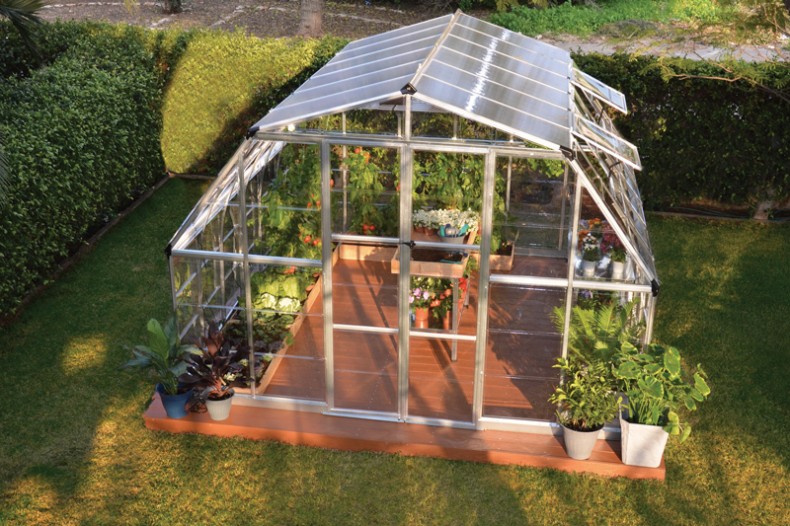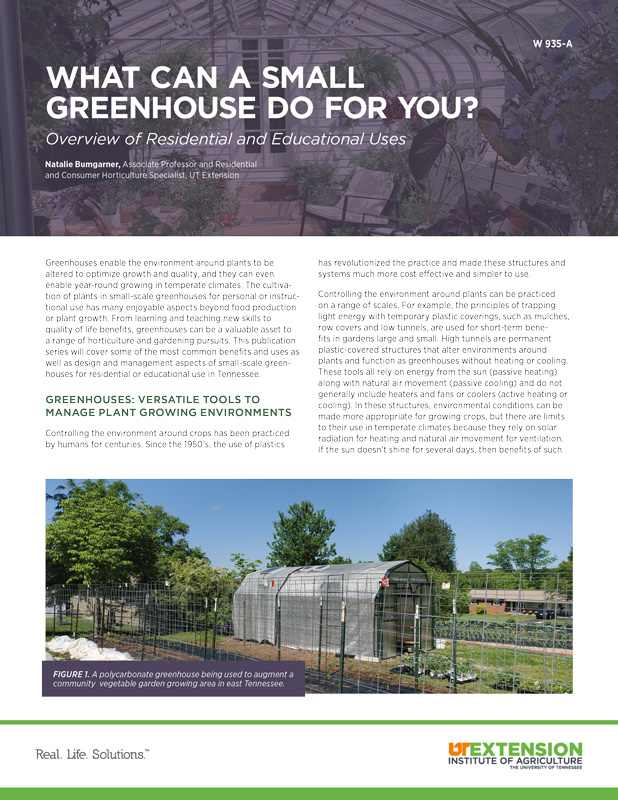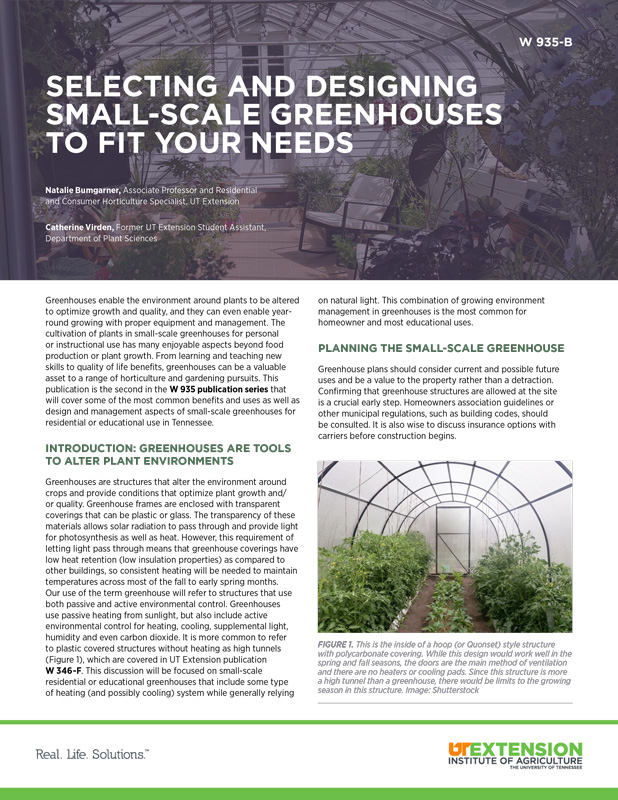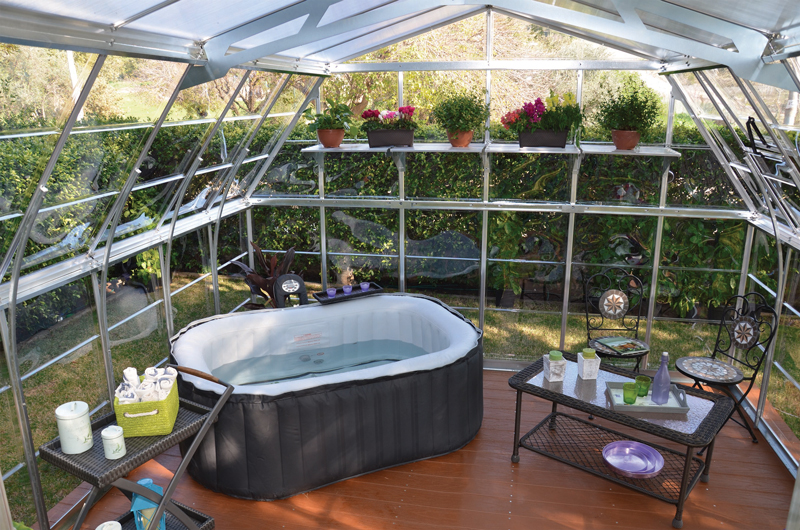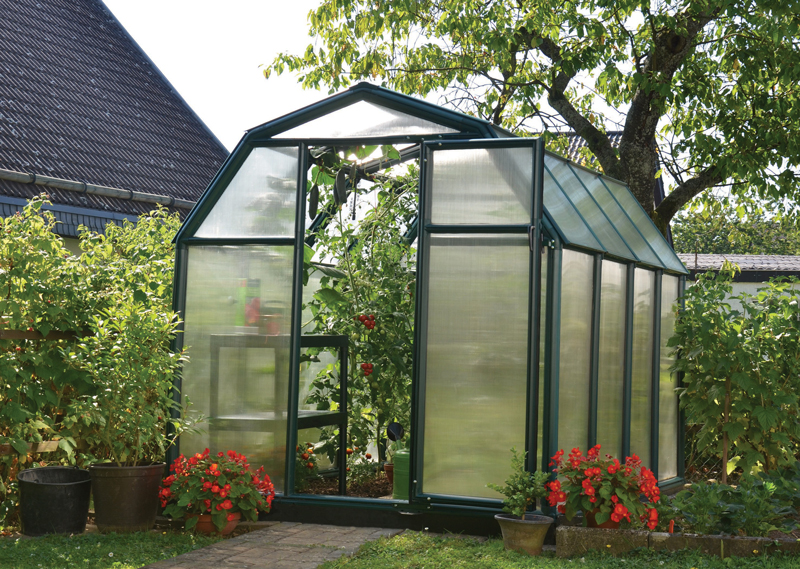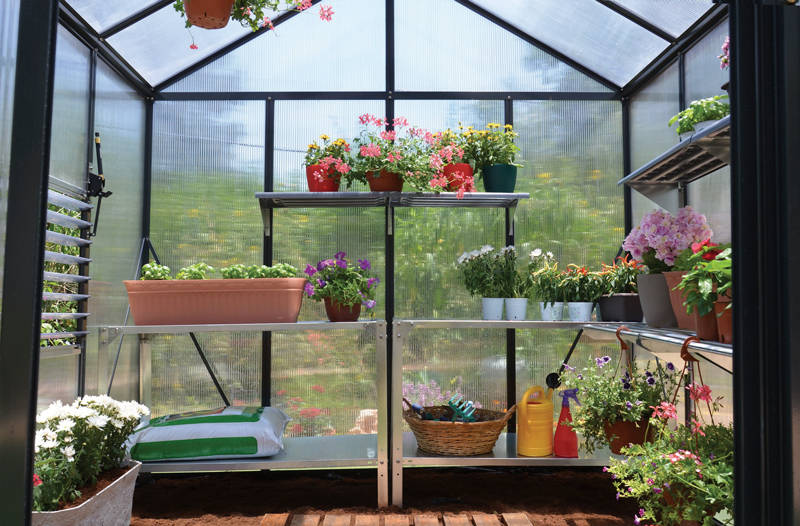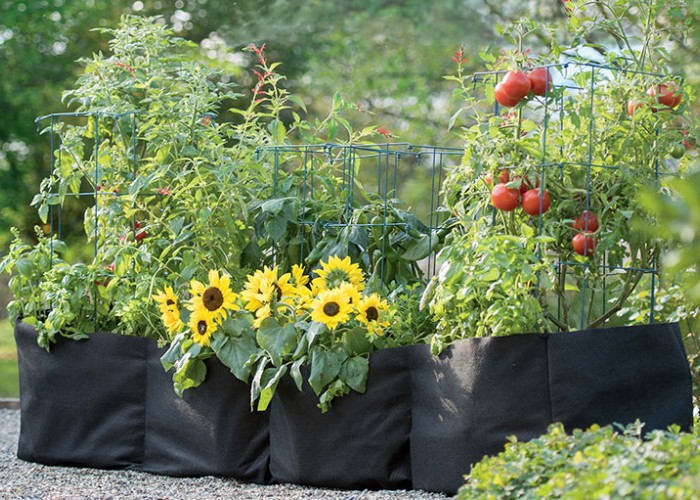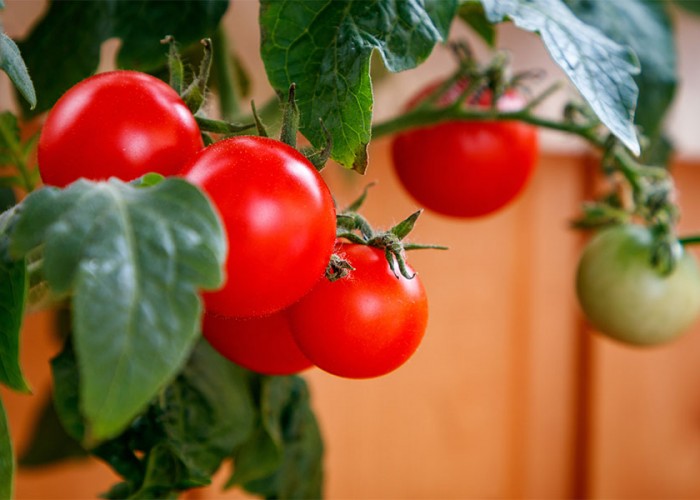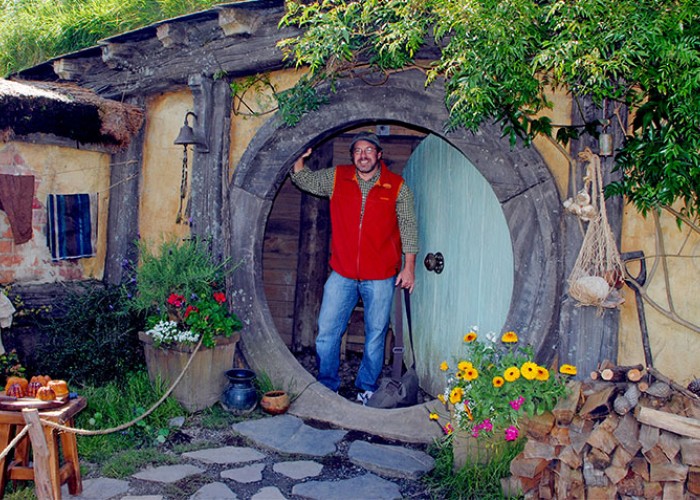Greenhouse Gardening on a Budget
Keep your garden growing year-round with a greenhouse kit
By Margaret BuranenGreenhouse kits give gardeners the benefits of a greenhouse — more growing space and a longer growing season — for much less money than the cost of a permanent greenhouse. They’re also fairly easy to come by, with options available at stores such as Walmart, Tractor Supply, Lowe’s and Home Depot.
“Greenhouse kits come with lots of different options,” says Jonathan Pritchett, a Home Depot store manager in Raleigh. “The demand for greenhouse kits has just exploded since COVID-19 hit. People had more time, and gardening was something they could do at home. And even a small greenhouse can give them the ability to grow a lot of their own produce.”
Prices for greenhouse kits span a wide range. Home Depot, for example, offers kits from $59 to $14,000. Size, durability of materials used, and extra features included account for the variation in prices.
Perfect placement
A greenhouse kit is definitely not something to buy on impulse. Jonathan advises doing some careful planning before you place your order. First and foremost, he urges homeowners to consider any homeowners association requirements or zoning laws.
“Placement of the greenhouse is key,” Jonathan emphasizes. “You want an open spot that will get pretty much all-day sun. Next best would be facing the afternoon sun.”
Choosing a location that is close to a source of water will make watering plants much easier. But if the greenhouse needs to be far from a faucet to get the most sun, buy an extension hose.
Flooring is also an important consideration.
“Most starter kits do not come with flooring. If the greenhouse will sit on dirt, it has to be absolutely level,” Jonathan says. Because dirt floors can attract insects, he also recommends applying a weed barrier around the dirt floor and outside of the greenhouse, which will also discourage rodents.
Some greenhouse kits have side skirts that can be buried to stop weeds. Crushed rock spread on top of a dirt floor will add more protection against weeds and also promotes better drainage. Digging a trench around the outside of the greenhouse is another way to increase drainage.
Other considerations
To protect vulnerable plants on North Carolina’s cold winter nights, a greenhouse needs a source of heat. In western portions of the state, that source might be an electric heater. But for much of North Carolina, Jonathan says a heat lamp will do the trick.
“A 350- to 500-watt lamp, the kind used in chicken coops, clipped on the frame is all you need,” he explains.
As spring temperatures rise, plants in a greenhouse can become stressed by heat. Jonathan advises making sure that the greenhouse you want has adjustable windows for ventilation. A fan, even a small one, will help keep the afternoon air cooler.
Shelving is sold separately from the greenhouse itself. The shelving should be the same brand as the greenhouse kit, or a compatible one. (Read the labels to be certain.) Then the framing hardware will match.
And be sure to weigh your current and future gardening needs when investing in a greenhouse kit.
“For most people, if they have the room and budget, a 10-foot by 10-foot is a great size greenhouse to start with,” Jonathan suggests. “You can pack a lot of different plants into it and add on more sections later. If you go with a 4-foot by 7-foot greenhouse, you may wish very quickly that you had chosen [something a little larger].”

Be Safe!
Follow instructions provided with the greenhouse kit and always have the recommended number of people on hand to lift and assemble the greenhouse. Make sure pets that might enter the greenhouse have a way out to avoid overheating during summer months.
Get the most from your greenhouse
Dr. Natalie Bumgarner, horticulture extension specialist at the University of Tennessee, offers the following expert advice on greenhouse gardening:
Plants best suited for greenhouses
- Produce and flowers grown from seed, such as heirloom varieties, that need heating from late winter to late spring.
- Produce grown year-round, especially hydroponically, that needs heating and cooling all year.
- Tropical plants, citrus trees and orchids that requires heating and lighting in all cool-weather seasons.
Greenhouse gadgets
- Install a sensor connecting a greenhouse thermometer to your smart phone. While away, you can adjust the fan, heater, vents or mister as needed to protect plants.
- A small mister system tied to a timer or environmental sensor is one of the best ways to keep plants moist and reduce air temperature.
- Metallic shade cloths are more expensive than mesh ones, but work better because they reflect heat. They’re great for late spring or early fall days when midday temperatures shoot up.
-
More tips on gardening
-
Share this story:

